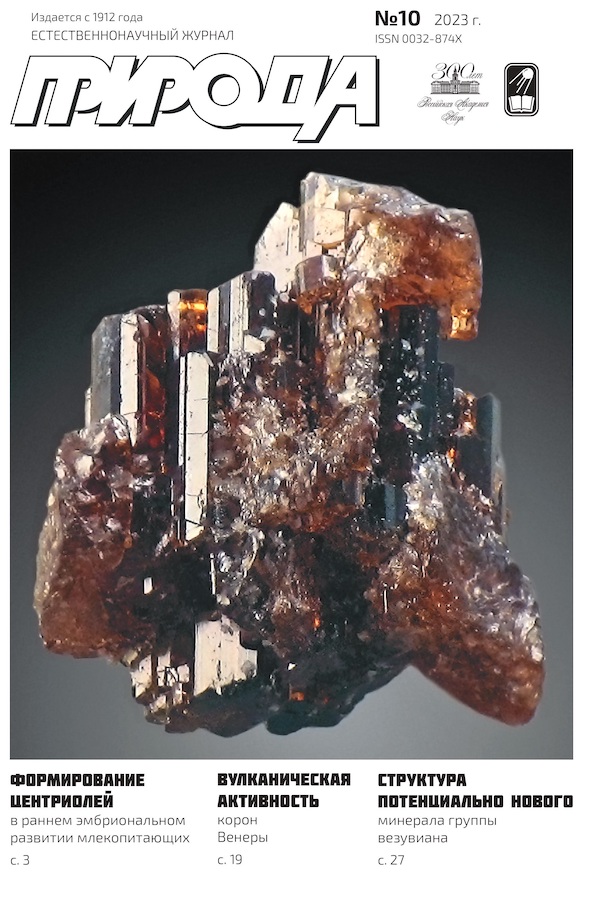Regulation of Gene Expression, or What Enables Genes to Operate
- Authors: Maslakova A.A1, Dolgikh V.A1, Zemlyanskaya E.V1,2
-
Affiliations:
- Institute of Cytology and Genetics, Siberian Branch of the Russian Academy of Sciences
- Novosibirsk State University
- Issue: No 10 (2023)
- Pages: 13-18
- Section: Articles
- URL: https://journals.eco-vector.com/0032-874X/article/view/627850
- DOI: https://doi.org/10.7868/S0032874X23100022
- ID: 627850
Cite item
Abstract
Genes preserve hereditary information, which is identical in all cells of the multicellular organism. Diff erent expression of genes ensures the formation of diff erent traits (for example, the formation of diff erent cell types). The mechanisms that aff ect gene expression are the subject to heavy scrutiny of research. The technological advances of the last two decades open up wide perspectives for in-depth studies of these mechanisms. In the review, we consider the reasons for the diff erent expression of the genes and the ways to measure gene activity and to determine its causes.
About the authors
A. A Maslakova
Institute of Cytology and Genetics, Siberian Branch of the Russian Academy of Sciences
Email: maslakova@bionet.nsc.ru
Novosibirsk, Russia
V. A Dolgikh
Institute of Cytology and Genetics, Siberian Branch of the Russian Academy of Sciences
Email: dolgikh@bionet.nsc.ru
Novosibirsk, Russia
E. V Zemlyanskaya
Institute of Cytology and Genetics, Siberian Branch of the Russian Academy of Sciences; Novosibirsk State University
Email: ezemlyanskaya@bionet.nsc.ru
Novosibirsk, Russia; Novosibirsk, Russia
References
- Roy A. L., Singer D. S. Core promoters in transcription: old problem, new insights. Trends Biochem. Sci. 2015; 40(3): 165–171.doi: 10.1016/j.tibs.2015.01.007.
- Schmitz R. J., Grotewold E., Stam M. Cis-regulatory sequences in plants: Their importance, discovery, and future challenges. Plant Cell. 2022; 34(2): 718–741. doi: 10.1093/plcell/koab281.
- Weber B., Zicola J., Oka R. et al. Plant Enhancers: A Call for Discovery. Trends Plant Sci. 2016; 21(11): 974–987. doi: 10.1016/j.tplants.2016.07.013.
- Panigrahi A., O’Malley B. W. Mechanisms of enhancer action: the known and the unknown. Genome Biol. 2021; 22(1): 108.doi: 10.1186/s13059-021-02322-1.
- Szabo Q., Bantignies F., Cavalli G. Principles of genome folding into topologically associating domains. Sci. Adv. 2019; 5(4): eaaw1668. doi: 10.1126/sciadv.aaw1668.
- Liu C., Cheng Y. J., Wang J. W. et al. Prominent topologically associated domains differentiate global chromatin packing in rice from Arabidopsis. Nat. Plants. 2017; 3(9): 742–748. doi: 10.1038/s41477-017-0005-9.
- Liu C., Wang C., Wang G. et al. Genome-wide analysis of chromatin packing in Arabidopsis thaliana at single-gene resolution. Genome Res. 2016; 26(8): 1057–1068. doi: 10.1101/gr.204032.116.
- Li B., Carey M., Workman J. L. The role of chromatin during transcription. Cell. 2007; 128(4): 707–719. doi: 10.1016/j.cell.2007.01.015.
- Zentner G. E., Henikoff S. Regulation of nucleosome dynamics by histone modifications. Nat. Struct. Mol. Biol. 2013; 20(3): 259–266. doi: 10.1038/nsmb.2470.
- Zhang H., Lang Z., Zhu J. K. Dynamics and function of DNA methylation in plants. Nat. Rev. Mol. Cell Biol. 2018; 19: 489–506. doi: 10.1038/s41580-018-0016-z.
- Strahl B. D., Allis C. D. The language of covalent histone modifications. Nature. 2000; 403(6765): 41–45. doi: 10.1038/47412.
- Kim S., Wysocka J. Deciphering the multi-scale, quantitative cis-regulatory code. Mol. Cell. 2023; 83(3): 373–392. doi: 10.1016/j.molcel.2022.12.032.
- Trayhurn P. Northern blotting. Proc. Nutr. Soc. 1996; 55(1B): 583–539. doi: 10.1079/pns19960051.
- Gibson U. E., Heid C. A., Williams P. M. A novel method for real time quantitative RT-PCR. Genome Res. 1996; 6(10): 995–1001. doi: 10.1101/gr.6.10.995.
- Volgin D. V. Gene expression: analysis and quantitation. Animal Biotechnology. A. S. Verma (ed.). 2014; 307–325. doi: 10.1016/B978-0-12-416002-6.00017-1.
- Wang Z., Gerstein M., Snyder M. RNA-Seq: a revolutionary tool for transcriptomics. Nat. Rev. Genet. 2009; 10(1): 57–63. doi: 10.1038/nrg2484.
- Grada A., Weinbrecht K. Next-generation sequencing: methodology and application. J. Invest. Dermatol. 2013; 133(8): e11. doi: 10.1038/jid.2013.248.
- Boyle A. P., Davis S., Shulha H. P. et al. High-resolution mapping and characterization of open chromatin across the genome. Cell. 2008; 132(2): 311–322. doi: 10.1016/j.cell.2007.12.014.
- Buenrostro J. D., Giresi P. G., Zaba L. C. et al. Transposition of native chromatin for fast and sensitive epigenomic profiling of open chromatin, DNA-binding proteins and nucleosome position. Nat. Methods. 2013; 10(12): 1213–1218. doi: 10.1038/nmeth.2688.
- Mieczkowski J., Cook A., Bowman S.K. et al. MNase titration reveals differences between nucleosome occupancy and chromatin accessibility. Nat. Commun. 2016; 7: 11485. doi: 10.1038/ncomms11485.
- Kim T. H., Ren B. Genome-wide analysis of protein-DNA interactions. Annu. Rev. Genomics Hum. Genet. 2006; 7: 81–102. doi: 10.1146/annurev.genom.7.080505.115634.
- Li Q., Hermanson P. J., Springer N. M. Detection of DNA Methylation by Whole-Genome Bisulfite Sequencing. Methods Mol. Biol. 2018; 1676: 185–196. doi: 10.1007/978-1-4939-7315-6_11.
- Muerdter F., Boryń Ł. M., Arnold C. D. STARR-seq — principles and applications. Genomics. 2015; 106(3): 145–150. doi: 10.1016/j.ygeno.2015.06.001.
- Belton J. M., McCord R. P., Gibcus J. H. et al. Hi-C: a comprehensive technique to capture the conformation of genomes. Methods. 2012; 58(3): 268–276. doi: 10.1016/j.ymeth.2012.05.001.
- Libbrecht M. W., Noble W. S. Machine learning applications in genetics and genomics. Nat. Rev. Genet. 2015; 16: 321–332. doi: 10.1038/nrg3920.
- de Almeida B. P., Reiter F., Pagani M. et al. DeepSTARR predicts enhancer activity from DNA sequence and enables the de novo design of synthetic enhancers. Nat. Genet. 2022; 54(5): 613–624. doi: 10.1038/s41588-022-01048-5.
- Song X., Meng X., Guo H. et al. Targeting a gene regulatory element enhances rice grain yield by decoupling panicle number and size. Nat. Biotechnol. 2022; 40(9): 1403–1411. doi: 10.1038/s41587-022-01281-7.
Supplementary files









